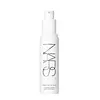What's inside
What's inside
 Key Ingredients
Key Ingredients

 Benefits
Benefits

 Concerns
Concerns

No concerns
 Ingredients Side-by-side
Ingredients Side-by-side

Water
Skin ConditioningButylene Glycol
HumectantGlycerin
HumectantNiacinamide
SmoothingPEG-150 Distearate
EmulsifyingPolysorbate 80
EmulsifyingTocopherol
AntioxidantHylocereus Undatus Fruit Extract
Skin ConditioningSodium Hyaluronate
HumectantPEG-240/Hdi Copolymer Bis-Decyltetradeceth-20 Ether
StabilisingPotassium Laurate
Emulsifying1,2-Hexanediol
Skin ConditioningHydroxyacetophenone
AntioxidantDisodium EDTA
Pentylene Glycol
Skin ConditioningPhenoxyethanol
PreservativeEthylhexylglycerin
Skin ConditioningCaprylyl Glycol
EmollientCI 16035
Cosmetic ColorantCI 19140
Cosmetic ColorantWater, Butylene Glycol, Glycerin, Niacinamide, PEG-150 Distearate, Polysorbate 80, Tocopherol, Hylocereus Undatus Fruit Extract, Sodium Hyaluronate, PEG-240/Hdi Copolymer Bis-Decyltetradeceth-20 Ether, Potassium Laurate, 1,2-Hexanediol, Hydroxyacetophenone, Disodium EDTA, Pentylene Glycol, Phenoxyethanol, Ethylhexylglycerin, Caprylyl Glycol, CI 16035, CI 19140
Water
Skin ConditioningGlycerin
HumectantPolyimide-1
1,2-Hexanediol
Skin ConditioningSpirulina Maxima Extract
SmoothingPortulaca Oleracea Extract
Skin ConditioningCamellia Japonica Flower Extract
EmollientMoringa Oleifera Seed Extract
Skin ConditioningTheobroma Cacao Seed Extract
AntioxidantHydroxyacetophenone
AntioxidantCitric Acid
BufferingPropanediol
SolventButylene Glycol
HumectantPentylene Glycol
Skin ConditioningDisodium Phosphate
Buffering
 Reviews
Reviews

Ingredients Explained
These ingredients are found in both products.
Ingredients higher up in an ingredient list are typically present in a larger amount.
1,2-Hexanediol is a synthetic liquid and another multi-functional powerhouse.
It is a:
- Humectant, drawing moisture into the skin
- Emollient, helping to soften skin
- Solvent, dispersing and stabilizing formulas
- Preservative booster, enhancing the antimicrobial activity of other preservatives
Butylene Glycol (or BG) is used within cosmetic products for a few different reasons:
Overall, Butylene Glycol is a safe and well-rounded ingredient that works well with other ingredients.
Though this ingredient works well with most skin types, some people with sensitive skin may experience a reaction such as allergic rashes, closed comedones, or itchiness.
Learn more about Butylene GlycolGlycerin is already naturally found in your skin. It helps moisturize and protect your skin.
A study from 2016 found glycerin to be more effective as a humectant than AHAs and hyaluronic acid.
As a humectant, it helps the skin stay hydrated by pulling moisture to your skin. The low molecular weight of glycerin allows it to pull moisture into the deeper layers of your skin.
Hydrated skin improves your skin barrier; Your skin barrier helps protect against irritants and bacteria.
Glycerin has also been found to have antimicrobial and antiviral properties. Due to these properties, glycerin is often used in wound and burn treatments.
In cosmetics, glycerin is usually derived from plants such as soybean or palm. However, it can also be sourced from animals, such as tallow or animal fat.
This ingredient is organic, colorless, odorless, and non-toxic.
Glycerin is the name for this ingredient in American English. British English uses Glycerol/Glycerine.
Learn more about GlycerinHydroxyacetophenone is antioxidant with skin conditioning and soothing properties. It also boosts the efficiency of preservatives.
This ingredient is not irritating or sensitizing.
Pentylene glycol is typically used within a product to thicken it. It also adds a smooth, soft, and moisturizing feel to the product. It is naturally found in plants such as sugar beets.
The hydrophilic trait of Pentylene Glycol makes it a humectant. As a humectant, Pentylene Glycol helps draw moisture from the air to your skin. This can help keep your skin hydrated.
This property also makes Pentylene Glycol a great texture enhancer. It can also help thicken or stabilize a product.
Pentylene Glycol also acts as a mild preservative and helps to keep a product microbe-free.
Some people may experience mild eye and skin irritation from Pentylene Glycol. We always recommend speaking with a professional about using this ingredient in your routine.
Pentylene Glycol has a low molecular weight and is part of the 1,2-glycol family.
Learn more about Pentylene GlycolWater. It's the most common cosmetic ingredient of all. You'll usually see it at the top of ingredient lists, meaning that it makes up the largest part of the product.
So why is it so popular? Water most often acts as a solvent - this means that it helps dissolve other ingredients into the formulation.
You'll also recognize water as that liquid we all need to stay alive. If you see this, drink a glass of water. Stay hydrated!
Learn more about Water